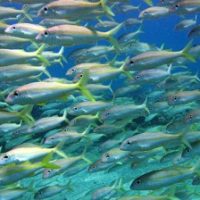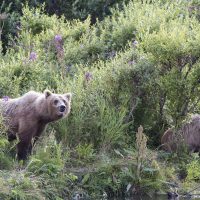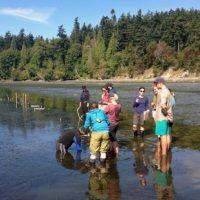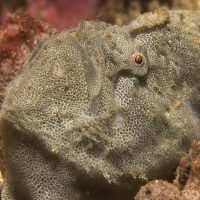Filter Results
Global ocean fish populations could increase while providing more food, income
“If reforms were implemented today, three-quarters of exploited fisheries worldwide could reach population goals within 10 years, and 98 percent by mid-century,” according to a report in PNAS co-authored by SAFS Professors Ray Hilborn, Trevor Branch, and Research Scientist Mike Melnychuk.
See full story by Michelle Ma in UW Today.Puget Sound Salmon on Drugs
The Seattle Times Reports “Puget Sound salmon are on drugs — Prozac, Advil, Benadryl, Lipitor, even cocaine. Those drugs and dozens of others are showing up in the tissues of juvenile chinook, researchers have found, thanks to tainted wastewater discharge.”
A research team of NOAA and UW scientists, including SAFS’ professor Dr. Graham Young, have documented levels of over 80 “chemicals of emerging concern”, pharmaceuticals and personal care products in estuarine waters and in juvenile chinook salmon and Pacific staghorn sculpin at sites in south Puget Sound impacted by discharge from wastewater treatment plants.
Salmon and Grizzly Bears – Oh My!
Through the School of Aquatic and Fishery Sciences, Sarah Schooler, ’15, spent six weeks in the Alaskan bush, collecting the same data in the field she’d been studying in the classroom: salmon and the hungry habits of grizzly bears.
Sarah Schooler and UW staff and students placing a fishing net on lake Aleknagik.
Student collaboration leads to first results describing sick sea star immune response
Students from around the country worked together as part of a class on the ecology of infectious marine diseases, taught by SAFS professors S. Roberts and C. Friedman, to examine how genes express themselves in sick and healthy sea stars.
Read more at UW NewsFinding Friday Harbor
Recent SAFS alumna Susan Harris spent 10 weeks at UW’s Friday Harbor Labs on San Juan island studying zoology and botany. UW Today featured a profile on Susan’s experience.
Read more at UW TodayNorth Pacific ‘blob’ stirs up fisheries management
A warm water mass in the Pacific Ocean is impacting forage species and stirring up more conversations about the need for ecosystem-based fisheries management. SAFS Professor Tim Essington weighs in.
Read more at Nature.comNew fish genus and species named for its red, fingerlike fins
SAFS Professor Ted Pietsch and SAFS graduate student Rachel Arnold recently relocated an elusive tropical frogfish, last seen in Australia in 1980. After collecting specimens and testing the DNA, they discovered they’d found a new genus and species of fish, now named the red-fingered anglerfish.
Read more at UW TodayFishing Amplifies Forage Fish Collapses
A new study, lead by SAFS Prof. Tim Essington and published on April 6 in the Proceedings of the National Academy of Sciences, “implicates fishing in the collapse of forage fish stocks and recommends risk-based management tools that would track a fishery’s numbers and suspend fishing when necessary.” Read the full story on UW Today.
Read morePublishers to Require Lay Summaries
Prof. Julian Olden and SAFS research scientist Lauren Kuehne published an opinion article in the Proceedings of the National Academy of Sciences, titled Lay Summaries needed to enhance science communication. This piece promotes the requirement and publication of lay summaries with peer-reviewed research articles.
Read moreBoard sets new sockeye escapement goals for 2015
Several in the SAFS community have been working on a management strategy evaluation for Bristol Bay sockeye salmon. Findings were presented to the Alaska Board of Fish resulting in changes to seasonal management targets, reported by The Bristol Bay Times.
Last week the Department of Fish and Game adopted a wider range with raised upper ends for sockeye escapement goals in most Bristol Bay rivers.



